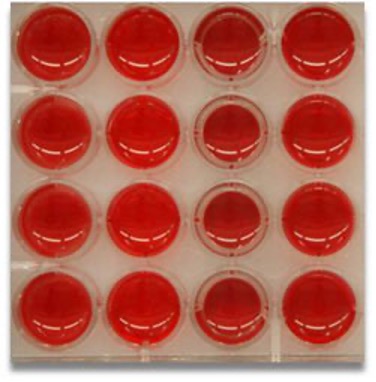Red Blood Cell Hemolysis Assay


NDSU also possesses a mammalian red blood cell (RBC) hemolysis assay for investigating biocompatibility of antimicrobial coatings. This assay has been traditionally used to evaluate the cytotoxicity profile of new antimicrobial compounds and biomedical materials. The degree of RBC hemolysis is determined by the concentration of free hemoglobin released after direct contact of RBC’s with the material being evaluated. Specifically, a saline suspension of fresh RBC’s, collected from healthy white rabbits, is delivered to coatings deposited in multi-well plates and incubated for 1-4 hours at 37°C. Each RBC suspension is then removed and the optical density of the supernatant is measured at 545 nm with a multi-well plate reader. As with the mammalian cell culture assay, comparisons of RBC hemolysis are made between the experimental antimicrobial coatings and non-toxic (silicone elastomer) and toxic controls (Triton X-100) to determine the degree of biocompatibility.


